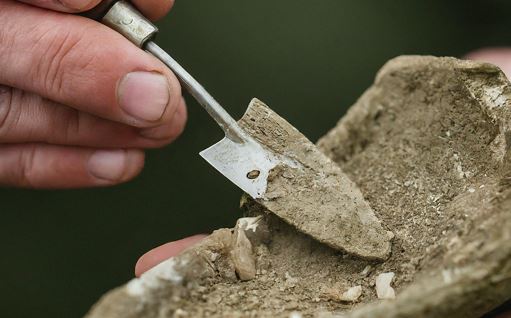Florida's Rich Archaeological Heritage: Uncovering the Past
1. Windover Pond (Brevard County)
This remarkable site, discovered in 1982, is a peat bog that has preserved human remains and artifacts dating back over 7,000 years. The well-preserved brains found at Windover Pond are among the oldest in the world, providing valuable information about early human populations in North America.
2. Little Salt Spring (Sarasota County)
A sinkhole filled with water, Little Salt Spring has yielded a treasure trove of artifacts dating back to the end of the last ice age. The site's unique underwater environment has preserved organic materials, including human remains, wooden tools, and animal bones, offering a rare glimpse into the lives of Paleoindian hunter-gatherers.
3. Crystal River Archaeological State Park (Citrus County)
This park encompasses a complex of six Native American burial mounds, the largest of which rises 25 feet above the surrounding landscape. The mounds were built by the pre-Columbian cultures of the Deptford and Swift Creek periods, dating back to around 500 BC.
4. Mount Royal (Putnam County)
Located on the St. Johns River, Mount Royal is a large shell midden, a mound created by the accumulation of discarded shells and other debris. Various indigenous cultures occupied the site over thousands of years, and excavations have unearthed numerous artifacts, including pottery, tools, and ornaments.
5. Mound Key Archaeological State Park (Lee County)
Situated on an island in Estero Bay, Mound Key is a complex of shell mounds built by the Calusa people. This powerful Native American chiefdom thrived in Southwest Florida for centuries. The mounds served as ceremonial centers, residential areas, and defensive structures.
Additional Sites of Interest:
- Lake Jackson Mounds Archaeological State Park (Leon County): Home to six earthen temple mounds built by the Mississippian culture.
- Letchworth-Love Mounds Archaeological State Park (Jefferson County): Features the tallest Native American ceremonial mound in Florida.
- Madira Bickel Mound State Archaeological Site (Sarasota County): A smaller mound site with evidence of occupation by three distinct cultures.
The Importance of Preservation
These archaeological sites are invaluable windows into Florida's past, providing a deeper understanding of the cultures that shaped the region's history. Ongoing research and preservation efforts are crucial to protect these fragile resources for future generations. By visiting and learning about these sites, we can appreciate the rich heritage of Florida and its indigenous peoples.
Visiting Florida's Archaeological Sites
Many of Florida's archaeological sites are open to the public and offer educational opportunities for visitors of all ages. Whether you're interested in ancient burial mounds, underwater archaeology, or the unique cultures of indigenous peoples, exploring these sites is a fascinating way to delve into Florida's rich and diverse past.
